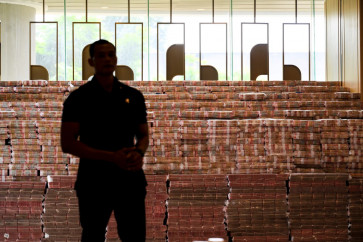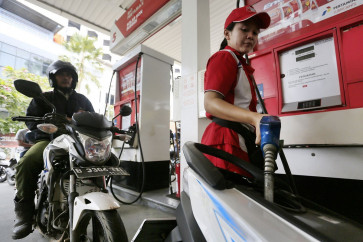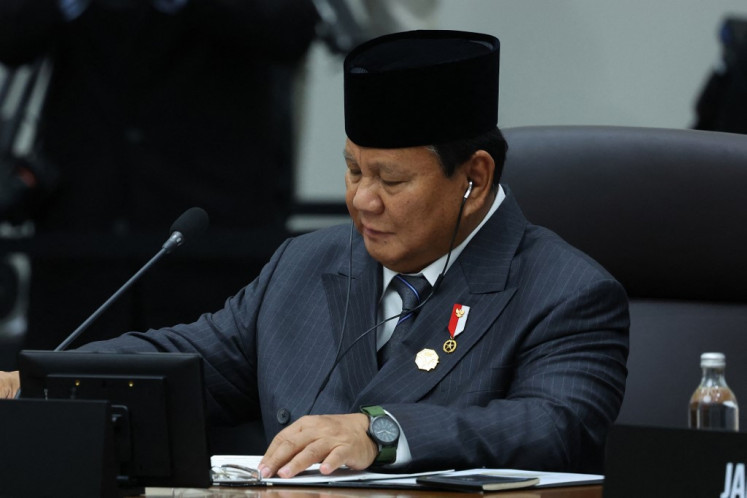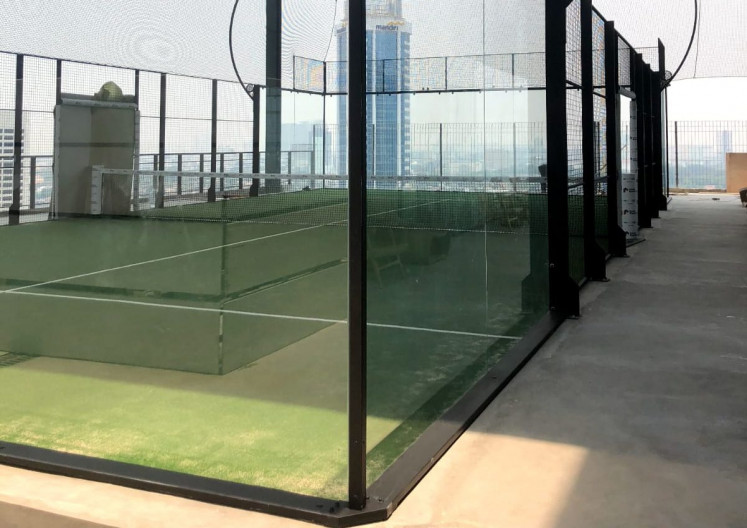Popular Reads
Top Results
Can't find what you're looking for?
View all search resultsPopular Reads
Top Results
Can't find what you're looking for?
View all search resultsWelcome to the new media world
Fresh look: Daniel Rembeth (left) CEO of The Jakarta Post, and consultants from DM IDHOLLAND give a presentation to The Post employees about the launching of newspaper’s new logo
Change text size
Gift Premium Articles
to Anyone
F
span class="caption" style="width: 398px;">Fresh look: Daniel Rembeth (left) CEO of The Jakarta Post, and consultants from DM IDHOLLAND give a presentation to The Post employees about the launching of newspaper’s new logo. JPChange is inevitable, we cannot escape it, nor can we deny it.
The way we interact with each other is very different compared to the methodologies of our past. How many of us still use fixed line telephones or postal mailing services?
Not as many perhaps. People tend to use mobile phones or email more often nowadays due to efficiencies.
As technologies evolve and digital sectors advance, new platforms are appearing to enhance or even change our way of doing things. Our life has changed.
Change is also happening in the media industry. Today’s media consumers are different. They do not just consume information but they have evolved into prosumers; a portmanteau of “producers” and “consumers”, which indicates that they retrieve information, but at the same time they can create and share information with others.
This evolution from consumers into prosumers is the effect of advancing technologies and digital sectors, especially the dot-com boom which gave people the freedom to communicate and transform society.
Dot-coms such as Blogger, Twitter, and Facebook have become primary platforms for prosumers to share information amongst their friends and the wider audience. A new force of citizen journalists and bloggers are starting to emerge.
In Indonesia, the rise of the prosumer movement can be seen on Twitter. They are very active and are known to share information long before electronic and printed media covers the scoop. One of the most influential prosumer movements was during the assault on HKBP Ciketing in August 2010.
It all started as a tweet from an eye witness, escalating into a national issue by the mass media. This shows that in modern days, people do not find information merely on traditional media platforms like TV or newspapers.
Social media has now become a real-time communicative source of information in which traditional media can not keep up with.
With the changing habit of consumers, traditional media needs to face the challenge of not being up-to-date within the competitive and advancing world.
The heavy-use of digital and social media should gain more focus as an entry point for traditional media to tap into the modern day consumers.
Now the challenge for brand owners is to have a relevance within this current era, without altering the associated personalities brand consumers have come to recognize.
Monocle, a London-based publication engineered by media maverick Tyler Brûlé, is a good example for a brand that successfully combines the goodness of both worlds traditional and digital.
As a magazine, Monocle offers exclusive yet cutting-edge features on global affairs, business, culture, and design. Brûlé truly understand that printed media is not the readers’ primary information source, especially young creative professional whom Monocle is targeting.
They interact with their gadgets more often than ever. Therefore, Monocle sets up a digital media which enriches the reading experience of the magazine. Monocle.com features a collection of short documentary videos on topics featured in the magazine.
With monocle.com, the brand tries to stay true to its promise of delivering exclusive yet cutting-edge content but it takes the promise further by creating digital media as an extension that is still align with the brand promise.
CNN is also an exemplary benchmark for a media brand which can keep its relevance with the new media world. In time where people are more familiar with digital devices like mobile phone to communicate, CNN as a reputable media brand tried to incorporate news, the people and their mobile phone and created a citizen journalism initiative named CNN iReport.
This platform allows people to contribute pictures or videos of breaking news from their town or neighborhood. Also, they took the concept of citizen journalism further by launching Open Stories, a crowd sourcing news coverage which combines iReport reporters with reports from CNN staff where it is then all organized on a map and timeline. We can see from this case that CNN consistently expresses their brand value “fast and accurate news” on whatever platform they use.
The success of Monocle and CNN with its digital brand extensions shows that a great brand should not sporadically shift into more advanced platforms, more importantly it should be able to keep up with contemporary issues and technologies whilst keeping true to their brand heritage.
So, welcome to the new media world.
Daniel Surya, chairman DM IDHOLLAND, South East Asia & Primo Rizki, consultant
DM IDHOLLAND, Global Brand Identity Network, Indonesia
WIR House 3rd Fl. Sentra Niaga T3-3 Puri Indah, Jakarta 11610
Tel: +62 21 583 03 707 Ext. 15 | Fax: +62 21 583 03 708










